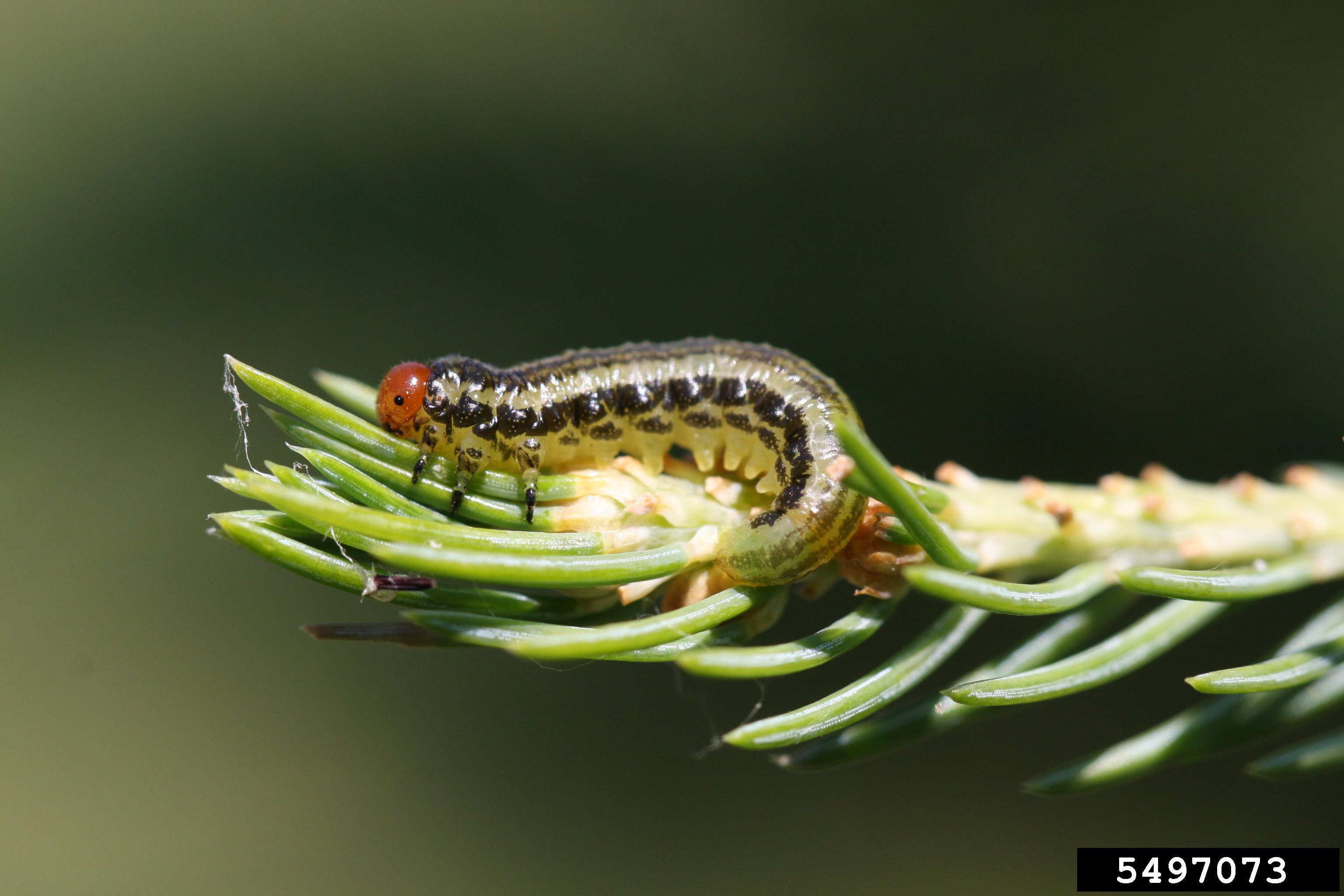
Spruce sawfly
Damaging

The yellow headed spruce sawfly (Pikonema alaskensis) is a common problem of spruce on the prairies. The sawfly is a small fly that emerges in the spring at the same time that the buds of spruce trees are beginning to grow. They lay eggs into the base of new needles. The eggs hatch into caterpillars (larvae) which begin feeding on the needles. The larvae continue growing and feeding until mid July. Pupation occurs in a brown cocoon mainly in the ground beneath the trees where they overwinter. There is one generation per year.
The damage to spruce trees can be severe especially since their preferred source of food is the young needles at the tips of the trees. The caterpillars eat the needles close to the branch of the tree. When the infestation is severe and attacks occur for several years in a row, they can completely defoliate and kill a tree. The problem of spruce sawfly can be severe in shelterbelts, where large numbers of spruce are growing.
Control:
- In smaller trees with minor infestations, handpick the caterpillars and destroy.
- Spraying them off the tree with a hard spray of plain water is effective. Small caterpillars are unable to climb back up the tree. Stomp on larger caterpillars that get knocked off the tree.
- Rake old needles beneath the tree to limit reproduction.
The natural predators of the sawfly larvae include rodents, beetles, a few insect parasites, tachnid flies and viral diseases.
Source:

